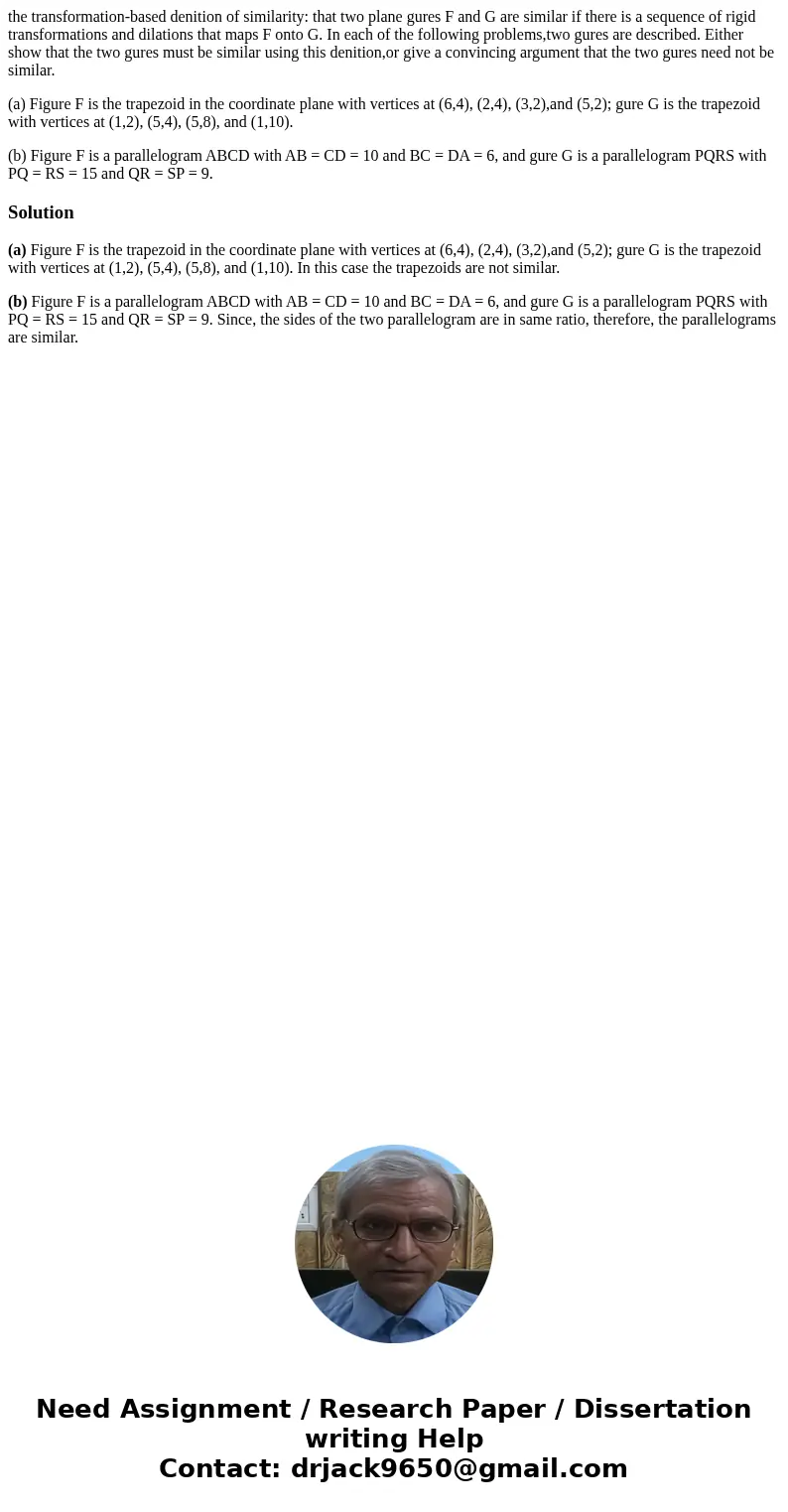the transformationbased denition of similarity that two plan
the transformation-based denition of similarity: that two plane gures F and G are similar if there is a sequence of rigid transformations and dilations that maps F onto G. In each of the following problems,two gures are described. Either show that the two gures must be similar using this denition,or give a convincing argument that the two gures need not be similar.
(a) Figure F is the trapezoid in the coordinate plane with vertices at (6,4), (2,4), (3,2),and (5,2); gure G is the trapezoid with vertices at (1,2), (5,4), (5,8), and (1,10).
(b) Figure F is a parallelogram ABCD with AB = CD = 10 and BC = DA = 6, and gure G is a parallelogram PQRS with PQ = RS = 15 and QR = SP = 9.
Solution
(a) Figure F is the trapezoid in the coordinate plane with vertices at (6,4), (2,4), (3,2),and (5,2); gure G is the trapezoid with vertices at (1,2), (5,4), (5,8), and (1,10). In this case the trapezoids are not similar.
(b) Figure F is a parallelogram ABCD with AB = CD = 10 and BC = DA = 6, and gure G is a parallelogram PQRS with PQ = RS = 15 and QR = SP = 9. Since, the sides of the two parallelogram are in same ratio, therefore, the parallelograms are similar.

 Homework Sourse
Homework Sourse